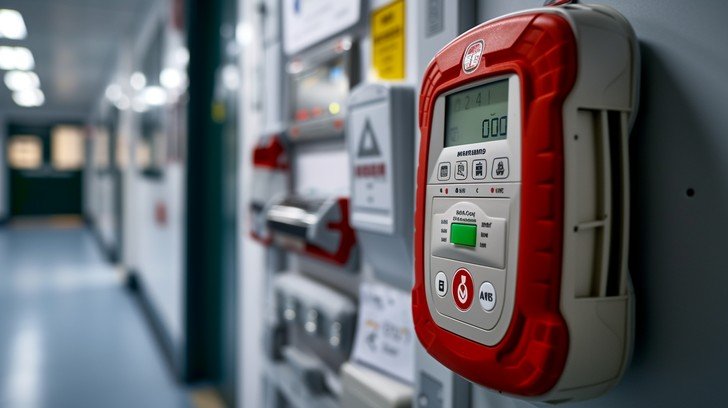Introduction to Fingerprinting
Fingerprinting is a crucial aspect of modern security. It was initially used in forensics and is now essential for secure identification in various industries. In today’s digital age, the unique patterns on an individual’s fingertips provide ideal biometric verification. This technology is restricted to high-security environments and has also permeated consumer technology, reinforcing its value across various applications. Companies are now leveraging fingerprinting for a fingerprint background check, ensuring robust security measures and compliance with regulatory demands in both public and private sectors. With mobile device advancements, fingerprint recognition has become a standard feature in smartphones, providing convenient and secure access to personal data. Industries like finance and healthcare now rely on biometric authentication for identity verification and safeguarding sensitive information. Fingerprint recognition remains crucial in strengthening access control and protecting critical assets as digital threats evolve.
How Fingerprinting Works
The fundamental operation of fingerprinting technology lies in its ability to capture and differentiate the unique ridge and valley patterns on human fingers. These are digitised by highly sophisticated scanners capable of creating detailed maps of an individual’s fingerprint. The process begins when a fingerprint scanner captures a digital image of the print. The biometric system then analyses this image, identifying unique pattern features such as loops, whorls, and arches. These features create a distinct fingerprint template stored within databases for future matching. This advanced technology ensures high accuracy and reliability, significantly lowering the chances of mistaken identity, which is crucial for everyday use and critical security applications.
Applications in Security and Identity Verification
Fingerprinting technology’s penetration into various sectors is vast and multifaceted. In consumer electronics, smartphones, tablets, and other personal devices increasingly rely on fingerprint sensors for unlocking and authentication. This biometric security measure replaces less secure options such as passwords or PIN codes. On a broader scale, corporate environments utilise fingerprint-based systems for employee verification and access control, optimising security by ensuring only authorised personnel can access sensitive areas. Governments also harness fingerprinting to secure borders, manage immigration systems, and verify identities for issuing official documents. This growing spectrum of applications highlights its importance in creating safe and secure environments across diverse domains.
Advantages of Fingerprinting Technology
The advantages of fingerprinting technology extend far beyond mere convenience. The intrinsic characteristic of fingerprints—remaining unchanged throughout an individual’s lifetime—ensures unmatched durability and reliability as a method of identification. This permanency vastly reduces the likelihood of identity fraud and impersonation. Additionally, fingerprinting systems offer a seamless user experience, requiring minimal user effort while providing high security. Unlike passwords or ID cards, which can be lost or stolen, fingerprints provide a secure, convenient option for identity verification. This ease of use and robustness make fingerprinting an appealing security choice for many organisations and individual users, contributing significantly to its growing popularity.
Emerging Technologies
The landscape of fingerprinting technology is dynamic, advancing alongside artificial intelligence and machine learning developments. These technologies are increasingly employed to refine fingerprint analysis and improve system security. For instance, AI-driven biometric systems benefit from large datasets, allowing them to learn and identify distinct fingerprint patterns more effectively. This optimisation reduces the risks of false positives and negatives, thereby increasing reliability. Moreover, improvements in sensor technology are leading to the development of multispectral fingerprint scanners capable of capturing subsurface information, enhancing the depth and accuracy of fingerprint recognition. These technological advancements promise to elevate the effectiveness of fingerprint systems, supporting more secure applications.
Data Security and Privacy Concerns
As fingerprinting technology continues to gain traction, data security and privacy have become paramount considerations. The sensitivity of biometric data underscores the necessity for robust security measures to prevent unauthorised access and misuse. Organisations are deploying advanced encryption techniques and strict access control policies to safeguard biometric information, ensuring it remains always protected. These protections are crucial, as breaches could lead to significant privacy violations and loss of trust. Implementing transparent data practices and seeking informed consent from users are vital strategies organisations employ to address privacy concerns, ensuring compliance with legal standards and regulations while fostering user confidence in biometric technologies.
The Future of Fingerprinting in Security Protocols
The future of fingerprinting technology presents expansive possibilities within security protocols. Anticipated advancements in biometrics foresee fingerprinting as part of a multifaceted approach to security, working alongside other biometric modalities such as facial recognition and voice analysis. These multifactor authentication systems will enhance security by requiring multiple complementary forms of identification, vastly reducing vulnerabilities. Moreover, as digital interfaces evolve, the seamless integration of fingerprinting into the Internet of Things (IoT) and intelligent environments is expected to offer even greater convenience and security. As technologies mature, fingerprinting will remain a pivotal component of comprehensive security solutions, helping shape a more secure and user-friendly future for digital and physical spaces.

